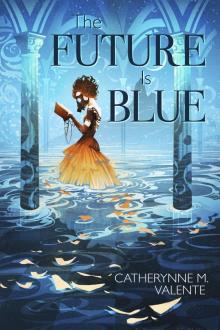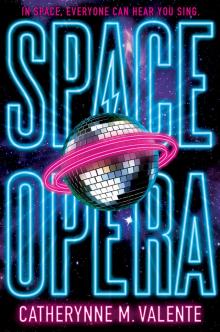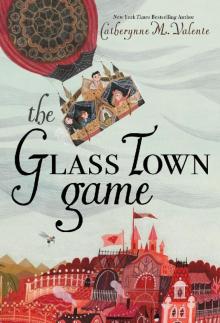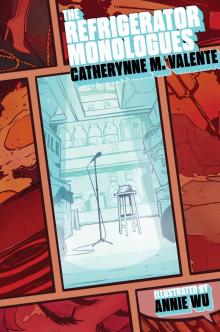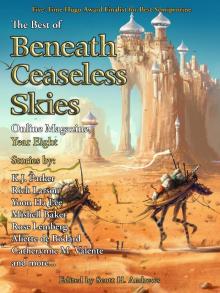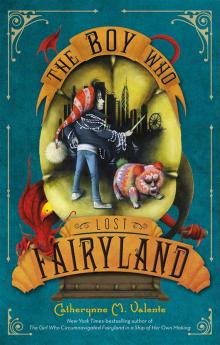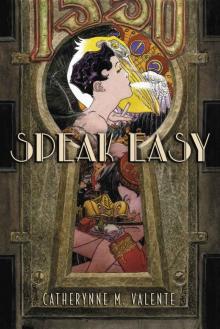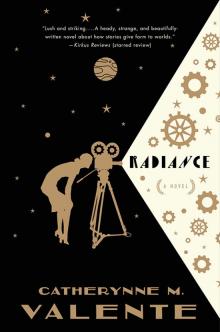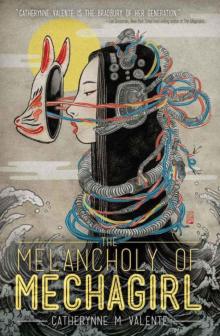


Third Transmission
Jack Heath
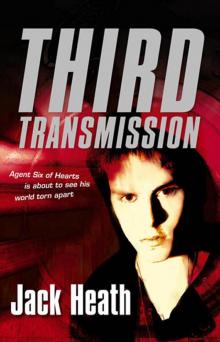
Jack Heath was born in Sydney in 1986. Now he lives in Canberra with his partner, Venetia, their friend Sam, and their cat, Onyx.
His second novel, Remote Control, was shortlisted for science fiction book of the year in the 2007 Aurealis Awards, and he was named the 2009 ACT Young Australian of the Year.
His hobbies include music, magic tricks, and making horrible things happen to fictional people.
Third Transmission is his fourth novel.
jackheath.com.au
Also by Jack Heath
The Lab
Remote Control
Money Run
THIRD
TRANSMISSION
Jack Heath
First published 2009 in Pan by Pan Macmillan Australia Pty Limited
1 Market Street, Sydney
Copyright © Jack Heath 2009
The moral right of the author has been asserted.
All rights reserved. No part of this book may be reproduced or transmitted by any person or entity (including Google, Amazon or similar organisations), in any form or by any means, electronic or mechanical, including photocopying, recording, scanning or by any information storage and retrieval system, without prior permission in writing from the publisher.
National Library of Australia
Cataloguing-in-Publication Data:
Heath, Jack, 1986-
Third transmission/Jack Heath.
9780330425100 (pbk.)
For juveniles.
A823.4
Typeset in 12/16 pt Minion by Midland Typesetters, Maryborough
Printed in Australia by McPherson’s Printing Group
Author photo by Tom Heath
Papers used by Pan Macmillan Australia Pty Ltd are natural, recyclable products made from wood grown in sustainable forests. The manufacturing processes conform to the environmental regulations of the country of origin.
These electronic editions published in 2009 by Pan Macmillan Australia Pty Ltd
1 Market Street, Sydney 2000
The moral right of the author has been asserted.
All rights reserved. This publication (or any part of it) may not be reproduced or transmitted, copied, stored, distributed or otherwise made available by any person or entity (including Google, Amazon or similar organisations), in any form (electronic, digital, optical, mechanical) or by any means (photocopying, recording, scanning or otherwise) without prior written permission from the publisher.
Third Transmission
Jack Heath
Adobe eReader format
978-1-74198-633-4
EPub format
978-1-74198-745-4
Mobipocket format
978-1-74198-689-1
Online format
978-1-74198-577-1
Macmillan Digital Australia
www.macmillandigital.com.au
Visit www.panmacmillan.com.au to read more about all our books and to buy both print and ebooks online. You will also find features, author interviews and news of any author events.
For my brother, Tom – the original Agent Six
ACKNOWLEDGEMENTS
This book required more research than anything else I’ve written (including essays at university). I’d like to acknowledge and congratulate Charles Siefe, Paul Davies, Richard Dawkins and Brian Greene, who all wrote helpful works. Mistakes are mine, not theirs. I thank Kevin Townson, Reuben Ingall, Ashley Arthur, Kate Griffiths and Ian Heath for introducing me to the writings of these authors. While I’m at it, I should also acknowledge my subscription to New Scientist.
Thank you to my amazing partner, Venetia Major, who supported me, challenged me, and inspired me. I literally couldn’t do this without her. Thanks to Mum and Dad – it’s incredible that they’re still willing to read first drafts and pretend they make sense – and Tom Heath, to whom this book is dedicated. He saw every plot twist coming, but said he loved it just the same.
A big thank you to Paddy Quiggin, who took the picture of Tom that’s on the cover, and Mel Feddersen, who did the design and Justin Bush, who made up the title.
Thanks are due again to Alex Shinzinger, who inspired a minor character who’s since become a major one, and to John Haynes, who compiled an extensive list of all the impossible things in this book and helped me fix most of them. I should acknowledge Sam McGregor, who offered numerous synonyms for ‘grimly’, and my long-suffering medical advisor, Jessi Thomson, who I once called in the middle of the night to ask: ‘If you fell out a second-story window, would you be more likely to survive the impact if your lungs were full, or empty?’
A big thank you to everyone at Pan Macmillan Australia – they’ve all worked too hard for me to steal the credit. Special mentions go to Cate Paterson, Sue Bobbermein, Mary Verney, Ali Lavau, and the wonderful Claire Craig, who told me I’d written ‘a cracker of a book’ – but, like any good publisher, still had a suggestion or two, or fifty. This novel, like my others, is better for her guidance.
Thanks to Elyse Miriam, a fan who inadvertently encouraged me to go a little further.
Last, but not least, thanks to all the readers – and the librarians, teachers and parents who ensure that I have readers to thank. Any author would be lucky to have such an enthusiastic and encouraging fan base. Those of you who demanded to know when the next Agent Six book was coming: this is it. Stop emailing me.
I don’t believe in free will. It’s indefinable in any sensible way – that is, you have to assume the rules of cause and effect are optional for your brain chemistry.
Scott Adams
PROLOGUE
With a wet smack, her face hit the asphalt. Her cheek split open, her teeth clattered against one another, and pain crashed through her skull like a wrecking ball. She didn’t cry out or try to get up. After everything that had been done to her, she still felt the hurt, but she no longer cared.
The alleyway reeked of old oil. The skeletal fire-escapes concealed walls wearing decades’ worth of scrapes and scratches. Surveillance cameras stared down from the corners of the buildings, telling her that whoever was watching was either a part of this or didn’t care enough to stop it.
The one who’d pushed her down, the brunette with the Kevlar vest, was saying something into a phone. Her voice was a muffled, warbling groan. The woman on the ground couldn’t make out any words. She had no ears to listen with – only naked eardrums in tiny holes on the sides of her head.
A van appeared at the other end of the alley. Waxed black walls reflected her ruined face back at her. One eye. One arm. Burnt skin. A respirator mask. She was barely recognisable as human. She felt like weeping, but she’d long since discovered that her tear ducts didn’t work.
Men in masks and goggles climbed out of the van. Combat boots, machine-guns slung over shoulders. The kind of gear that would attract attention, if they weren’t wearing it on the South Coast – the darkest, scummiest corner of the City.
She tried to rise, pushing her remaining arm against the ground. The brunette with the phone kicked it out from under her, and her head hit the ground again. She twisted her brows into a frown to stop her lidless glass eye from popping out.
The leader of the masked troops called out to the brunette. She yelled something back. Warble, moan. The one-eyed woman shivered. She didn’t need to hear the words to know what was happening. The woman in the Kevlar had got all the information she needed out of her, and so she was being sold to someone else. Someone who’d probably ask all the same questions, and ask them just as hard.
The leader lifted a briefcase as he approached. The brunette grabbed the earless woman, lifted her to her feet. As she rose, she avoided looking at the brunette. That face still horrified her. Seeing those eyes stare into her own always made bile rise in her
throat. It was as disturbing as looking in a mirror and suddenly realising your reflection had stopped copying you.
The leader handed over the briefcase. The woman in the Kevlar pushed her forwards.
She had just enough time to see the brunette fade into the shadows before the leader pulled a black bag over her head. She went from half-blind to blind in an instant, from smelling oil to smelling nothing, from hearing gibberish to silence.
And as the soldiers bundled her into the van, she decided it was an improvement. She hoped they’d keep her bagged forever. She’d given up hope of feeling better than this, and after what she’d been through, she just didn’t care. Not anymore.
MISSION
ONE
Day 1
FORECAST
Agent Six of Hearts braced his hands against the hot walls of his steel coffin. The rubber pillow under his head barely lessened the shuddering against his skull as his tiny vessel blasted through the ocean. The web of safety straps around his torso hummed like high-voltage power cables.
He checked the flickering screen above his head. Altitude: 28 metres below sea level. Speed: 150 kilometres per hour. Distance from target: 5.9 kilometres. A little over two minutes to go, he calculated.
Only hours before, agents from the Deck had drilled a hole in the Seawall, several storeys underground. They’d plugged the hole with a pressure lock, put Six inside a modified PL-220 torpedo, and put it inside the lock. Then they’d opened the other side, and Six had blasted through into the open ocean.
His target was a battleship. The CNS Gomorrah was 90 metres wide and almost a kilometre long. It towered 42 metres above the sea and plunged to almost 50 metres below. It had a catapult runway on its deck for launching and landing light aircraft, and a twin missile silo concealed inside its bow. Its top speed was 65 kilometres per hour, so it was fortunate that Six’s torpedo was in front of it rather than behind. Every second counted.
The ship had been dispatched from a mining rig 16 kliks off the coast on the other side of the City; the side where ChaoSonic had absolute control. Where there were cameras on every street corner and listening devices in every home. Where the soldiers didn’t need to beat anyone into submission, because the population was already on its knees. Quiet and obedient, those were the people of the North-Central side.
The ship’s destination was a very different place – the South Coast. Two years ago, ChaoSonic had wiped out much of the local population by dropping bombs on the area. They had claimed they were suppressing an outbreak of avian influenza – bird flu. The survivors had responded by destroying the ChaoSonic Bureau of Statistics building. The war had begun.
The harder ChaoSonic squeezed, the more the South Coast people struggled. When ChaoSonic started sending tanks rolling through the streets, the population laced their territory with landmines. People died. When ChaoSonic called in air support, dropping bombs on roads and buildings, the rebels turned the last hospital into a giant surface-to-air missile turret. And more people died.
Now, the daily death toll was in the hundreds. Buildings blew apart like paper bags filled with air. Anytime too many people congregated in one place, ChaoSonic soldiers would fire machine-guns indiscriminately into the crowd, because they knew at least half the people would fire back.
But this morning, all ChaoSonic troops had withdrawn from the hot zone. They packed up and left in a matter of hours. The rebels rejoiced and the civilians started to emerge from their bunkers. It seemed the war was over. Unless you knew about the weaponised strain of the SARS virus, and how it had been removed from a ChaoSonic lab. Unless you saw the ChaoSonic soldiers setting up roadblocks a few kliks away from the combat zone. Unless you saw a battleship with missile-launch capability heading towards the South Coast.
The Deck had been the first to connect all the dots. They’d sent out an emergency team. But a plane or helicopter would be shot down if it tried to land on the CNS Gomorrah. A boat could be shredded with metal storm fire. A radar-invisible submarine might have a shot, except it wouldn’t be fast enough to intercept the battleship, and there was no way to procure one in time anyhow.
They’d decided that a torpedo with a human payload was their best chance of preventing a catastrophic viral outbreak. There was only room inside for one person, and thanks to the exposed fuel tank, the temperature would rise to over 45 degrees Celsius. High enough to cause heatstroke in a normal human.
Agent Six’s mission was to sneak on board the CNS Gomorrah and find the canisters containing the SARS virus. Then he was supposed to steal them, smuggle them out and bring them back to the Deck so a vaccine could be synthesised before the canisters were safely disposed of.
He had an 800-gram SOL-bomb, which, when detonated, would create a blast of heat intense enough to melt steel within a 40-metre radius. If Six couldn’t remove the canisters, he was supposed to plant the bomb there in the hope that it would destroy them.
And there was one more thing. If he couldn’t find the SARS canisters, he was supposed to take the SOL to the engine room and plant it there, in the starboard corner, closest to the hull. Sink the ship, so no-one would ever see the canisters again.
He had forty-five minutes before the ship came within firing range of the South Coast.
Six checked his equipment one last time. He had a Parrot 220 RPM semi-automatic pistol, loaded with seventeen rubber bullets. He had three more magazines on his belt. He had a miniature cutting torch, with enough fuel for ten minutes of fiame. He had a scuba mask and a small oxygen bottle, in case he needed to sink the ship but was unable to escape. And he had a set of four small knives, suitable for throwing or close combat.
This mission sounded impossible. Search a huge ship, crowded with soldiers, for something very small. Then find it, take it and escape, all without being spotted, in forty-five – he checked his watch – make that forty-four minutes.
But that was Six’s life. Three weeks ago he’d escaped from the jail of a body-stealing psychopath. He’d driven a tank up a fiight of stairs. He’d been hammer-thrown up from a runway to intercept an airborne plane.
Impossible was nothing to Agent Six of Hearts.
The shuddering against his head became slower. The torpedo had almost reached its target. He jammed his boots against the fuel tank at the rear of the chamber, pushed his hands above his head, and waited for impact. He could smell his own sweat as his merocrine glands fought to keep his temperature down. It was like being in an oven.
Doong! The air throbbed inside the torpedo as it struck the hull of the Gomorrah. Six gasped as the whiplash shocked through him. Even with the safety webbing, it still felt like running into a brick wall, and it took a couple of seconds for him to catch his breath.
Six pushed a button above his head, and felt the walls shake as the nose-cone was ejected, making the front of the torpedo flat. There was a crackling hum as the electromagnets around him switched on, fusing the torpedo to the hull of the ship.
Six unbuckled the straps and twisted around so he was lying on his belly. He got out the cutting torch and put on his goggles so the flame didn’t blind him in the enclosed space. As he pulled the trigger, a blue light lanced out from the nozzle, spearing through the metal, slicing the front of the torpedo and the ship’s hull.
It took Six about a minute to carve a circle into the metal. Then he put his palms flat against it, careful not to touch the glowing sides, braced his feet against the rear of the torpedo, and pushed.
With a squeal and a clank, the two circles of iron popped out and thunked onto the floor. Cold air washed in over his face. Six draped a square of heat-absorbent fabric over the bottom of the hot edge, slithered out through the opening, and put the lids he’d made back over the hole.
Stage one, infiltration, was complete. He was on board the CNS Gomorrah.
He was in a small barracks, filled with bunk beds and blankets and not much else. There were no people. The circle he’d cut in the wall was just above one of the beds, so he had
landed on a synthetic rubber mattress. This was good – the hole he’d made was in the shadow of the bunk above, and wouldn’t be spotted unless someone decided to sleep in the bed Six was crouched on. Not likely to happen in the next forty-three minutes.
Six took off his goggles and climbed off the bed. His boots made no sound as he ran across the barracks. He reached a door – thick steel with a valve in the centre to open it. He twisted the wheel, and the door ka-chunked open.
Outside in the corridor, pipes of varying colours and thicknesses ran across the ceiling and the rusted walls. Six knew the colours all had different meanings – blue for cold water, white for hot, yellow for fuel. It was like being inside a telephone line in a movie. The only light came from tiny, flickering bulbs above Six’s head.
A soldier was walking past at a crossroads up ahead. He was in his BDUs – Battle Dress Uniform – which for ChaoSonic Naval Services meant black boots, a dark grey coat and a matching cap with a white logo on the front.
If Six was going to get to those canisters without raising the alarm, he’d need to blend in somehow. Now might be a good time to procure a disguise.
He waited until the soldier was out of sight, then he slipped forwards through the darkness towards the crossroads.
When he turned the corner, the soldier’s back was receding into the distance. Six ran, silent, precise, catching up to the soldier, preparing to make his move –
Smack! Six drove his right elbow in behind the guy’s shoulderblade as his left hand snaked around and clamped itself over the soldier’s mouth.
The guy gave a brief, muffled cry before Six plunged his index finger into the flesh behind the jaw, striking a pressure point that knocked the soldier out cold.
Six lowered his victim to the ground, unbuttoning the coat as he did so. The soldier should be unconscious for maybe twenty minutes, which wasn’t too bad. Six expected the alarm to be raised pretty soon after that anyway. But he didn’t want anyone to stumble across him. He bent two of the pipes on the wall aside, cracking the seal of rust. He stuffed the unconscious man through the gap, and twisted them back into place. There, he thought. No-one will find him, unless they’re looking pretty hard.

